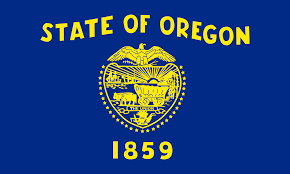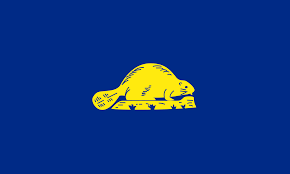That's why it's called "BEAVERton-Hillsdale"
- Hillsdale News
- Mar 22, 2020
- 2 min read
Updated: Apr 2, 2020
[Posted March 24, 2020]

Before the arrival of Europeans, there were an estimated 60-400 million beavers in North America, depending on who's doing the estimating. There were a lot of them. By the mid-19th century they were hunted almost to extinction, but they have shown themselves to be resilient, even persistent, creatures and now number as high as 15 million in the US.

Hillsdale has its very own beaver colony, in the section of Fanno Creek that runs along the north side of Beaverton-Hillsdale Highway just west of the intersection with Dosch Road. Beavers are mainly active at dawn and dusk, so it's unlikely you will see them at other times of day, but visitors to the site can clearly see that beavers are busy here: the large dam, pools, chewed trees and "slides," the trails where they exit and enter the creek, all provide obvious evidence of their activities.

There's a lot about beavers to interest the eager observer: they were hugely important economically, culturally, and environmentally to indigenous Americans and later to the European colonization of North America. Their significance to the history of Oregon is recognized on our state flag and in many of our place names.
The largest North American rodent, beavers are often considered a pest in the realms of agriculture and transportation because of their great skill at redesigning the landscape with water. Yet these same skills make them a keystone species whose activities are important to fish and their related ecosystems as well as to ground water tables.
The Oregon Department of Fish and Wildlife report “Living with Wildlife: American Beaver” lists the following among beaver benefits:
Improvement of habitats and food sources for many other animals, including fish, birds, reptiles, amphibians, big game, bats and other river-bank loving mammals such as river otter and mink
Water flow control that can reduce downstream flooding after storms and snow melt
Improvement in water quality and increase in groundwater tables, stream bank stabilization and erosion control
The City of Portland's Bureau of Environmental Services has, in a way, partnered with the beavers to improve the quality of urban streams such as Fanno Creek, which are often degraded by trash, construction, and pollutants in street runoff. Every few years BES must remove some of the Hillsdale beavers' dams to keep the pump stationing functioning smoothly, but at the same time they are re-vegetating the area with native species favored by the beavers to encourage their presence and the benefits they bring to other habitats. By keeping the beavers happy with their preferred food items and building materials the city hopes to keep adjacent property owners happy while letting the beavers do their thing.
Southwest Neighborhoods, Inc., will hold an event this fall focussed on beavers in the environment and native American culture. The Eena Festival takes its name from the word for "beaver" in the creole language Chinook Wawa, a language that developed after the arrival of Europeans and the growth of the North American beaver trade, and still spoken as a first language by some Oregonians of native descent today.
If you visit the Hillsdale beaver colony, be aware parking is limited and the creek has no developed footpaths.
Valeurie Friedman







